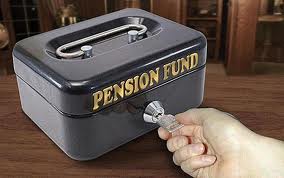Contracting Out of Your State Second Pension
 Contracting out of the additional state pension (now called the State Second Pension, S2P, and previously the State Earnings Related Pension, SERPS) became popular after the possibility was introduced to do so in 1988. The Conservative government of the time, seeking to address the problems of future state pension payments, gave employees a way to use some of their national insurance contributions to pay into their own personal pension (or employer’s pension) scheme. To encourage people to opt out, the government also paid in an extra 2% of earnings into the employee’s personal pension scheme for the first five years of being contracted out.
Contracting out of the additional state pension (now called the State Second Pension, S2P, and previously the State Earnings Related Pension, SERPS) became popular after the possibility was introduced to do so in 1988. The Conservative government of the time, seeking to address the problems of future state pension payments, gave employees a way to use some of their national insurance contributions to pay into their own personal pension (or employer’s pension) scheme. To encourage people to opt out, the government also paid in an extra 2% of earnings into the employee’s personal pension scheme for the first five years of being contracted out.
Opting out was encouraged by financial advisers, too. It was thought that personal pensions would perform better over time and give greater benefits than the state pension scheme. However, this has not proved to be the case as investment markets have failed to live up to historic rates of return and annuity rates have fallen too.
How contracting out works now
The first thing to note is that from 6th April 2012 contracting out is only available if the contacted out amount is being paid into a defined benefits occupational scheme. This is because of the problems caused by poor investment returns and falling annuity rates. A defined benefits scheme guarantees a certain level of pension, whereas a defined contribution scheme has no such guarantee.
Anyone who is contracted out into a stakeholder, personal, pension, or other defined contribution scheme will be automatically contracted back in to the S2P from 6th April 2012.
If you choose to join an occupational defined benefits scheme, and then opt to contract out of the S2P, then both you and your employer will pay lower NI contributions, the balance that would have been paid into the S2P being paid into your occupational scheme. When you retire, the S2P which you would have received will be replaced by additional income from your employer scheme.
Unlike the S2P, where only income can be taken, a tax free lump sum of up to 25% can be taken from an occupational scheme, and this includes the opted out payments made. Also, the S2P can only be taken at state pensionable age, whereas benefits from occupational schemes can be taken from age 55.
Already contracted out?
For anyone already contracted out into a defined contributions scheme, contributions can still be made into the scheme. Employers can also continue to pay into the scheme, though there will be no further contributions from the rebate of the contracted out portion of national insurance contributions.
Contributions made from contracted out monies are now known as ‘protected rights’. The portion of protected rights is shown on a pension statement, and cannot be transferred into certain other pension schemes.
Should you contract out?
Whereas conventional advice now is to remain contracted in, there are benefits of contracting out. The main ones are the ability to take a tax free cash lump sum upon retirement and to access benefits earlier. However, you should remember that doing either, or both, will negatively affect the amount of pension income you receive through your retirement years.
In 2011, the Pensions Green Paper was presented to parliament. This included proposals to introduce a single pension payment, abolishing the complicated basic state pension, S2P, and pension and savings credits in attempts to rationalise the whole pensions system in the UK. Doing so will also abolish the ability to contract out of the S2P. This process is due to start at the beginning of the next parliament in May, 2015.
Not sure if you are contracted out?
If you phone the Pensions Helpline (08459 150 150), and quote your NI number, you will be able to find out if you have been contracted out. Contracting out is only available to employees who pay certain levels of national insurance contributions. It is not available to the self-employed.
In conclusion
The pension environment is changing rapidly. The rules governing different types of pension schemes, and the choices available for previously contracted out funds and contracting out now and in the future, are in a period of constant flux. Whenever reviewing your pension arrangements, then you should seek professional advice. This is even more important when considering the interaction between protected rights, the options for contracting out, and especially when considering transferring current arrangements to another pension policy.